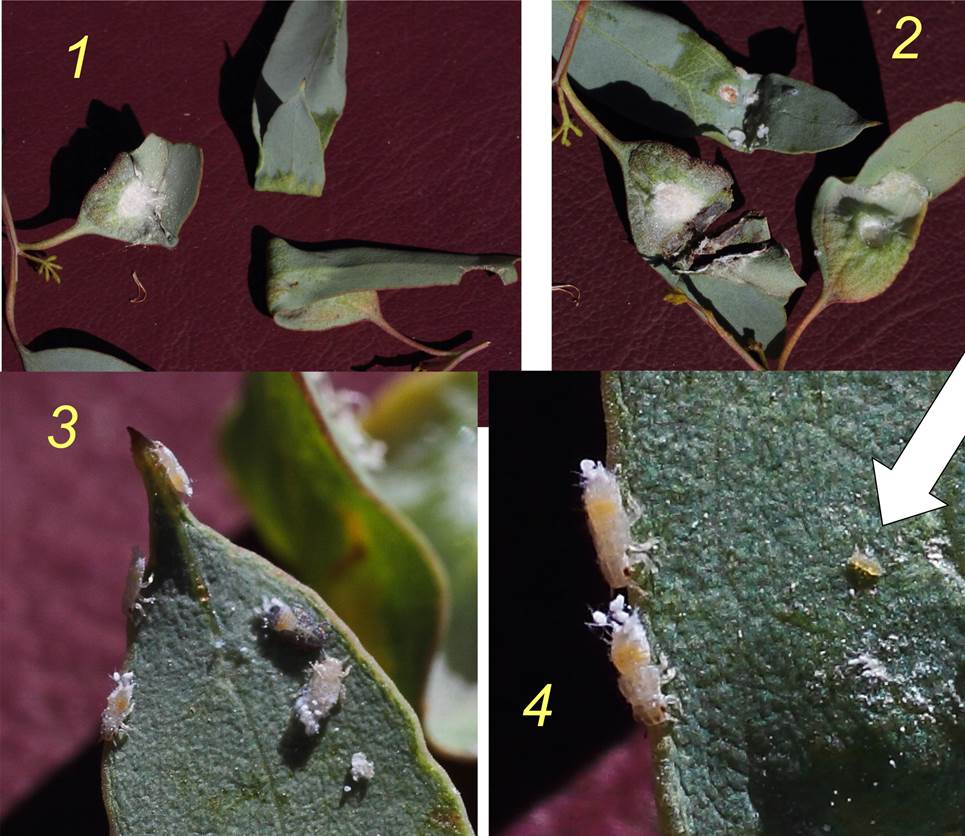Next, this morning I managed to find on fallen euc twigs some examples of the folded leaves (see 1) ,which I opened (see 2). From one of these several examples of the ACT Leaf-folding Psyllid emerged (3). There were different sizes. The larger 2 in (4) are about the size of a pin-head, the tiny arrowed one being probably an earlier stage in the life-cycle. Now, the point of this is that a lorikeet, using feet, bill and that very clever tongue was able to account for a psyllid nest every few seconds. I imagine a flock of twenty could quickly cleanout all the psyllids in a large tree. No doubt other birds such as cuckoo-shrikes, wattlebirds and pardalotes also hunt for psyllids but surely not as efficiently as the well-equipped lorikeet. Perhaps the leaf-folding strategy is a reasonably effective defence against some bird species although clearly ineffective against the lorikeet, which seems to be attracted to the obvious fold. Might I venture the prediction that for better or worse, dark days are ahead for the ACT Leaf-folding Psyllid. On the question of competition, Superb Parrots are also great psyllid hunters, particularly when feeding young, and also Swift Parrots although I have only seen those species at the open-leaf lerps.


